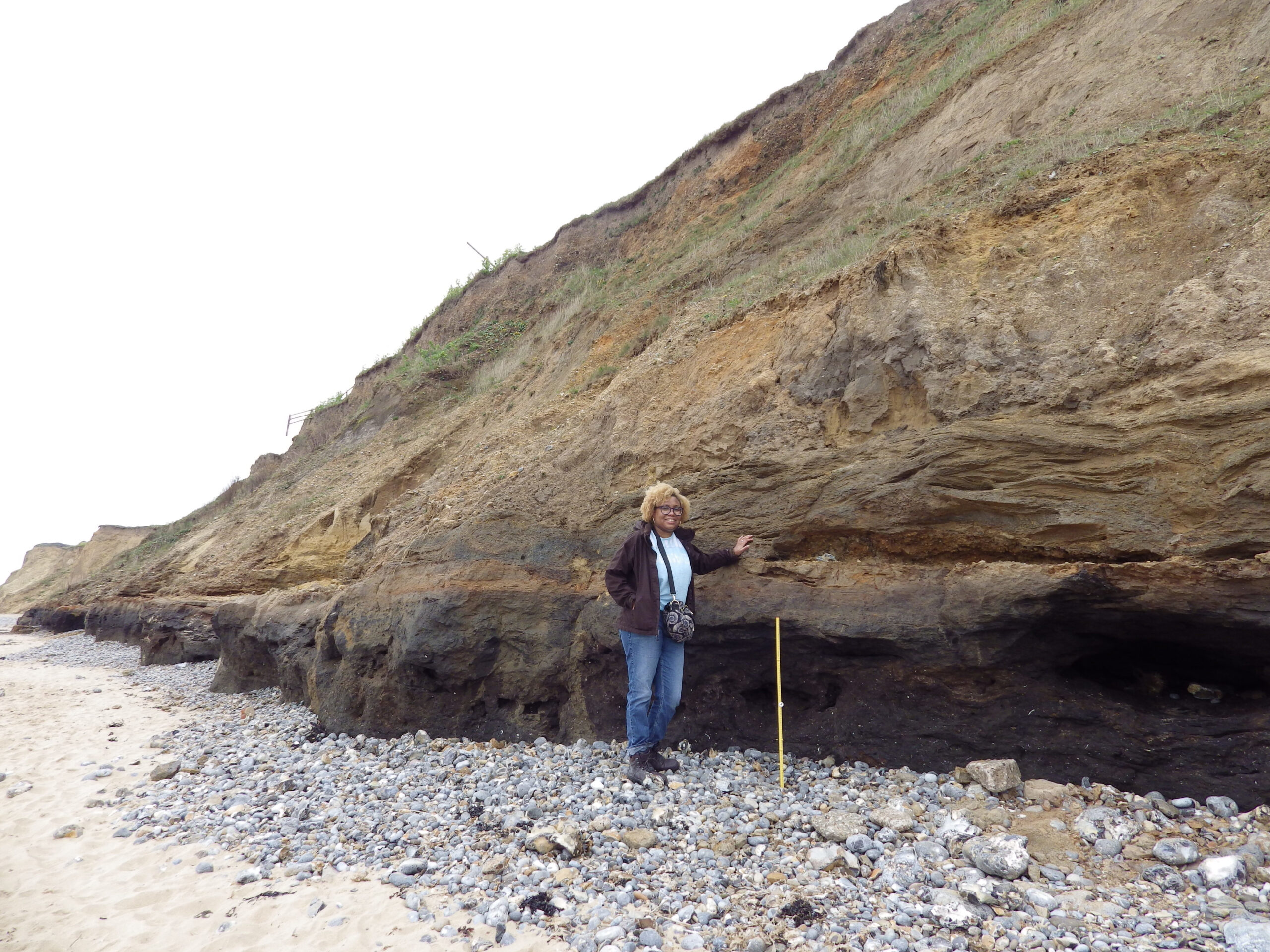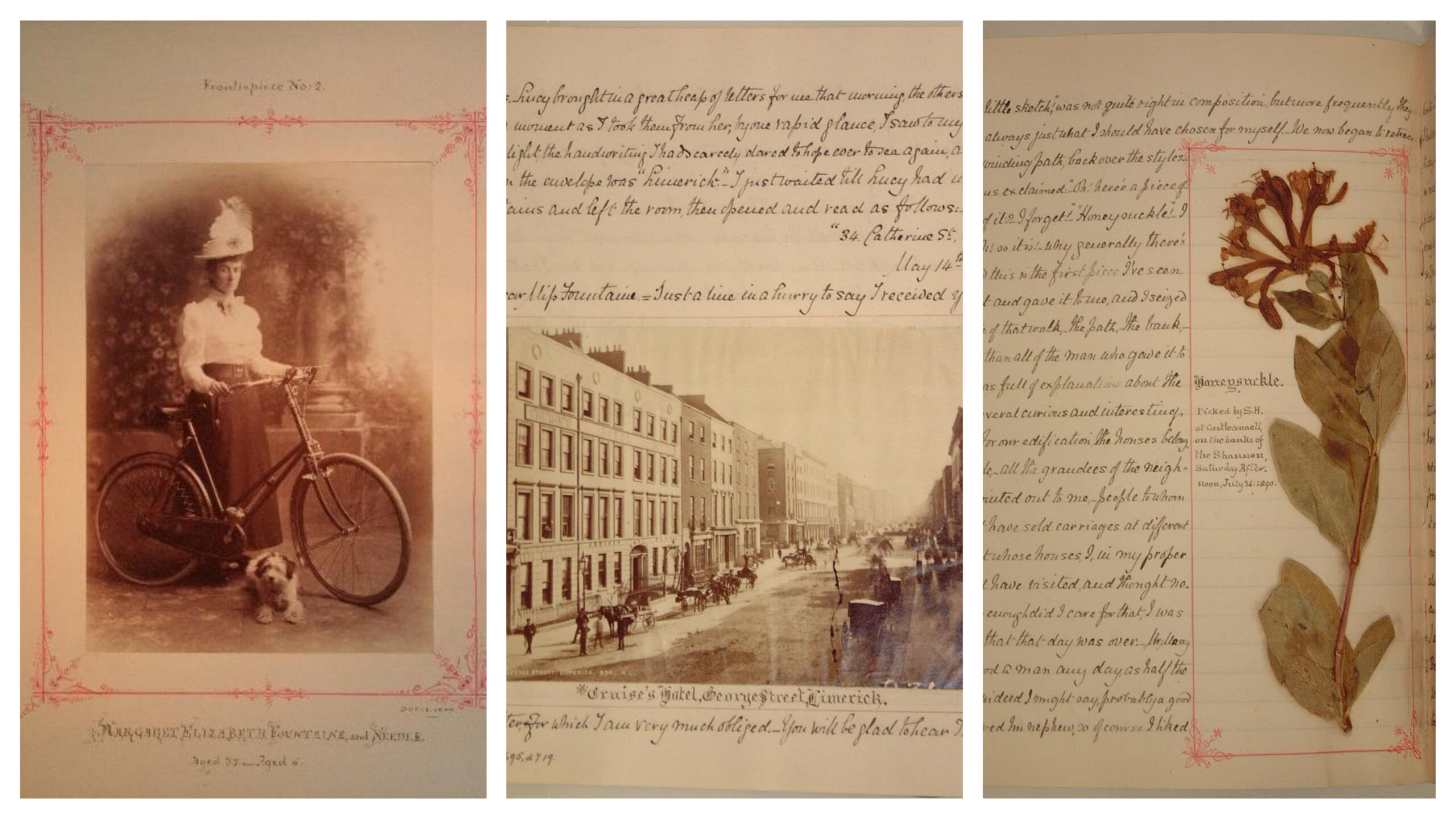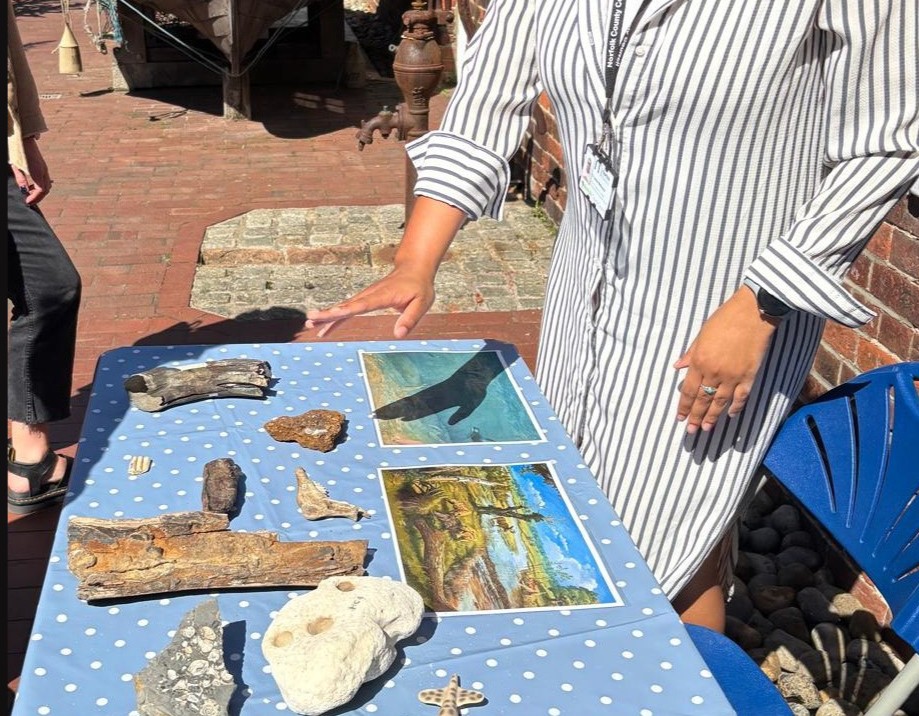
Here in Norwich and Norfolk, locals and visitors alike love the landscape- its variety, its wildlife and, particularly, its coastline. From pebbled shores to sandy dunes, traditional seaside towns to tranquil spaces away from any hustle and bustle. Whether you’re here on holiday, taking a long walk along the shore or tucking into fresh fish and chips, it’s hard not to feel the pull of the Norfolk coast.
One of the biggest effects on our coastline is climate change, how it affects local communities and what else it reveals about the secrets of North Norfolk. That’s where Norfolk Museums Service’s Senior Curator of Climate Change and the Dynamic Change comes in!
As the first person to take on this role, we speak to Dr Leanne Melbourne to find out why she was drawn to Norfolk and why our coastline is so important.

Dr Leanne Melbourne is the Norfolk Museum Service’s first Senior Curator of Climate Change and the Dynamic Coast
Thank you. I’m really excited to be here!
My role really consists of two parts. One is to look after the scientifically and historically important Natural History and Geology collections for the Norfolk Museum Service. This includes the infamous West Runton Mammoth, the largest, most complete fossil elephant skeleton in the UK, as well as the 22,000 strong butterfly collection from Norfolk’s very own Margaret Fountaine, a famous lepidopterist (someone who studies butterflies) from the late 1800s/ early 1900s. We also have her 12-volume journals that detail not only her life collecting and travelling around the world, but also all her social interactions, including her love life from the age of 16 up until 76 (the year before she died). My role is to make these collections more accessible to the public and researchers through events, activities and exhibitions.
The second part of my role is to engage with communities in Norfolk to improve understanding around climate change and coastal erosion. This includes working with those communities affected the most by coastal erosion to help tell their stories to wider community. This work is being done through North Norfolk District Council and the Coastwise Programme, which is an initiative to help prepare and transition coastal communities affected by coastal erosion.
My background is quite varied. I’m a researcher who uses museum collections to look at the impacts of climate change on marine organisms (seaweeds, mussels and oysters). I’ve always been passionate about the coastline and how climate change is affecting it. I’m also very passionate about science communication and engaging the public on all things climate change and natural history collections.
When this role came up, I jumped at the chance, as it incorporates all the things I’m passionate about. Working with communities, working in natural history collections and engaging people about climate change and our changing coastline.
For me, Norfolk (and Norwich) is a new place to explore. Norfolk is a real hidden gem, it has a gorgeous coastline and countryside, lovely friendly towns and a vibrant, artsy city in Norwich. I’ve only been here a short time, but you see how passionate people are here about Norfolk and the coastline – it’s truly inspiring.

Margaret Fountaine- a famous lepidopterist from Norfolk whose collection of butterflies and letters are housed by the Norfolk Museums Service
I don’t have all the answers and there is so much to learn from people who are experiencing and seeing this change every day. It’s so important to have open and honest dialogues, where you are listening. There isn’t one single piece of information, it’s about collaboration and making sure people are heard and listened to.
What I really love is that our fossil heritage shows how dynamic our coastline is and how much it has changed. Every storm reveals a little bit more about our deep history.
Obviously, the West Runton Freshwater Bed (around 700,000 years ago) is extremely important and highlights creatures that you would never imagine in the UK like hyenas, bears, mammoths and rhinos. But we also have evidence of fossils that are even older- around 70 million years old- that give us evidence of Norfolk being a warm shallow sea with belemnites (ancient squid like creatures) and marine reptiles swimming about. It shows our coastline to be a very dynamic one!

Leanne’s role deep dives into the incredible history of our coastline as well as the impacts of climate change today
In my master’s year of my Chemistry degree, I went to a guest lecture on ocean acidification by prominent scientist, Professor Sir John Raven. That single lecture really changed my trajectory. I was fascinated by the fact that carbon dioxide could dissolve in the ocean and change the chemistry affecting all marine life. I knew there and then that I wanted to look at marine organisms and how our changing oceans were affecting them. So, I did my PhD in Earth on calcified seaweeds, and the rest is history!
I like being outside. I love a beach to look for fossils and the life that washes up on the shore – the seaweeds, the shells, crabs…everything!
I wouldn’t say I’m a birder just yet, it’s something I’ve taken up quite recently, but I do love to go out and look at birds. I’m thinking of joining one of the many groups we have here in Norfolk.
I also like to unwind listening to live music- Norwich Arts Centre is a great venue- and by playing netball.
Visiting Norwich? Norwich Castle is home to a permanent collection of Margaret Fountaine’s butterflies. The City of Stories is also a great base to spend a day on the Norfolk coast! You can get there by bus or train- check out our Travel page for more.
By subscribing you will be added to our Newsletter mailing list.
